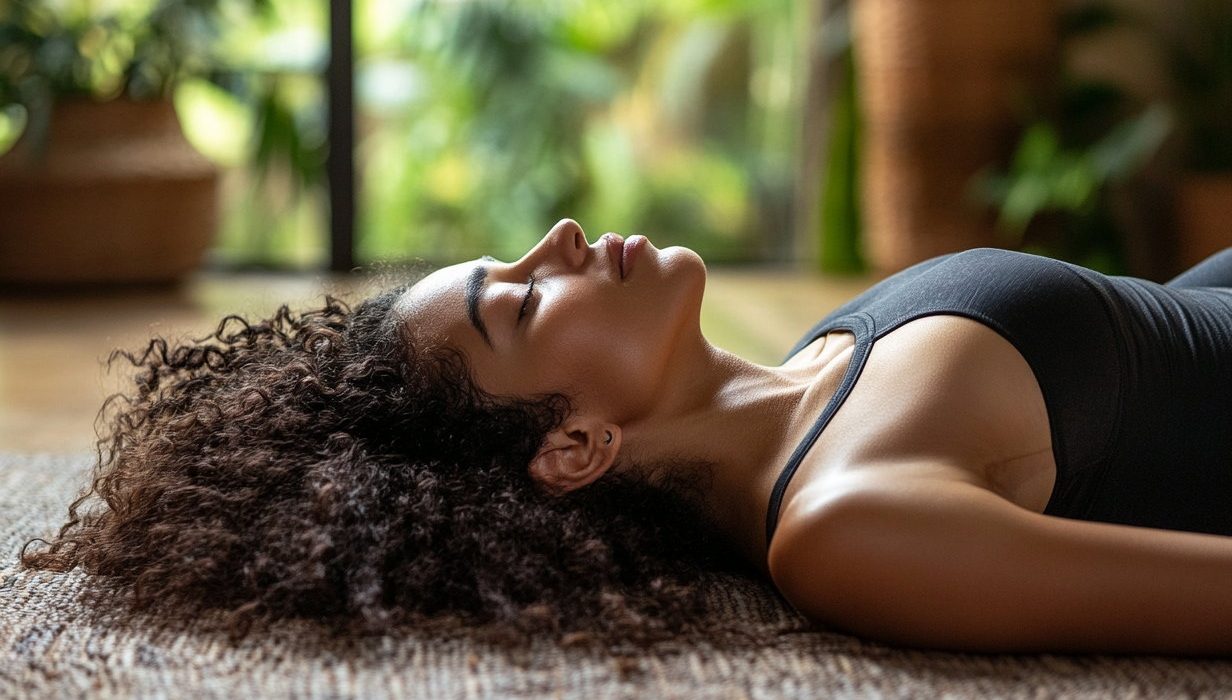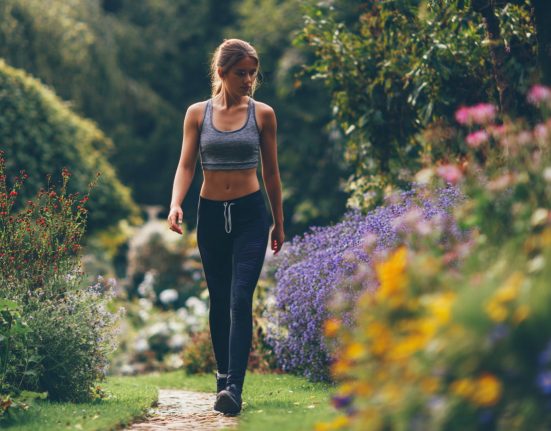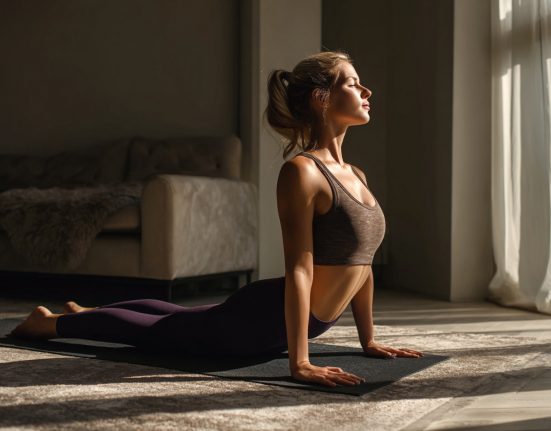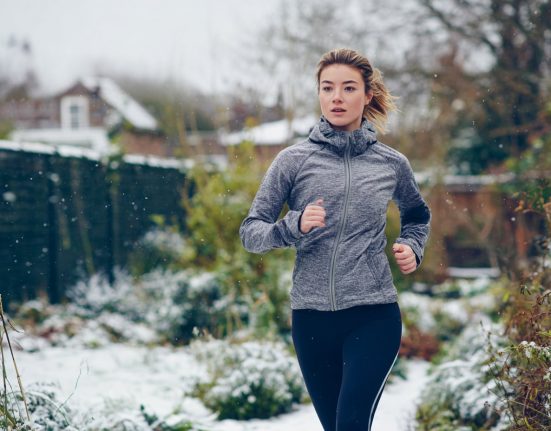The next time you find yourself tossing and turning, try one of these yoga poses that top teachers around the world practice to help them start snoozing.
Can’t sleep? Join the club: According to the American Academy of Sleep Medicine, more than a third of Americans suffer from occasional bouts of insomnia, which is defined as trouble falling asleep or staying asleep. The good news: Yoga can help. Here, top yoga teachers around the world share their go-to poses that help them drift off—fast.
7 Yoga Poses That’ll Help You Fall Asleep Faster
The Pose: Siddhasana (Perfect Pose)
The Teacher: Tias Little
“I never have trouble falling asleep. I am like a cow; I am so prone to sleep that I could fall asleep standing up. But when I wake too early in the morning, or in the middle of the night, I always go to Siddhasana, a pose for meditation to slow my autonomic rhythms.”
How-to: Sit upright, eyes closed in the dark or semi dark, and allow your breath to become soft, velvety, and slow. This is not an active posture, so there’s no need for lifting your spine or holding your shoulders back. Rather, I keep my spine supple and delicate, like a long-stemmed tulip. Cover yourself in a shawl, hoodie, or a blanket. Notice how at night or early morning the vibration in the air is exquisitely subtle. Let the silence envelope you. If thoughts come in, especially thoughts about the day to come, carefully shelve them away. (If your mind gets caught up in planning, you become more activated and alert.) When you first find yourself slipping off to sleep, roll back into bed in Savasana. Lie on your back and be still, enjoying the feeling of ease and spaciousness you accomplished by sitting. If you do not drift off to sleep, be assured by the fact that you have guided your body and mind to a place of deep restoration— the second-best thing to sleep.
The Pose: Viparita Karani (Legs-Up-the-Wall Pose)
The Teacher: Natasha Rizopoulos
“Viparita Karani is my go-to pose when I need to rest and recharge, whether at bedtime or at any point in the day when I could use a reboot. It’s a classic restorative pose that can be practiced with a variety of props and leg variations. Under all circumstances it’s about supporting the nervous system by encouraging the relaxation response. Whether I have 5 minutes or 15, I’ve learned over the years that during and after practicing Viparita Karani I will have a sense of my consciousness settling and the vrttis not whirling quite so fast. It’s also a great antidote for tired legs.”
How-to: Place a bolster or blanket parallel to and 5 to 6 inches from a wall. Sit sideways on the support with your hip against the wall and then swing your legs up the wall and lie back. The support should end up beneath your lower back with your buttocks, falling between the support and the wall. If you have tighter hamstrings and this feels uncomfortable, you can slide a bit further from the wall, so the support ends up beneath your buttocks. If your legs tend to fall apart, you can loop a strap around your ankles. I often cover my eyes with an eye bag and lay a blanket across my chest and abdomen. Take whatever arm position feels most natural and enjoy the calm.
The Pose: Supta Ardha Dandasana (Supine Half-Bow Pose)
The Teacher: Sage Roundtree
“If you’ve spent the evening sitting on the sofa reading or watching TV, this is a sweet stretch for your hip flexors. This is especially useful if you’re a side sleeper, as your hips are flexed all night. Releasing the hips, and using the bed as a prop, is a profoundly restorative move—don’t be surprised if you find yourself drifting off mid-pose.”
How-to: Scoot to one side of the bed and let your leg dangle over the edge. You can keep it straight or bend your knee and reach your hand to your foot. At the same time, as a counterbalance, take your bed-side leg into half Cobbler’s Pose (Ardha Baddha Konasana). Hold for 10–20 breaths and repeat on the other side.
The Pose: Paschimottanasana (Seated Forward Bend) and Balasana (Child’s Pose) hybrid
The Teacher: Mary Taylor
“As much as I’m not a natural forward bender, I find the best yoga pose antidote for all kinds of insomnia is a cross between Paschimottanasana and Balasana. It brings awareness to the sensations of heaviness—the feeling of the weight of your head, arms, torso and legs being fully supported. Occasionally I’ll go to my mat and take the pose for 10 to 20 minutes if I can’t sleep. But more often I’ll just sit up and organize a few pillows in order to do the pose in bed.”
How-to: Sit upright with your legs out in front at hip-width or a bit wider. You should feel comfortable and relaxed, knees bent out to the sides however much feels good to you, so that your feet flop naturally out to the sides as well. Place a folded pillow or bolster between your legs so that you can rest your forehead on the pillow, positioned so that your nose and breathing are unobstructed. If you feel stiff, add a soft pillow or blanket to support your abdomen and insert a higher pillow between your legs. Do not exert; rather melt into the support of the pillow and the bed or floor beneath you. Curl over and drape your arms in a relaxed manner alongside the pillow, above your head. If your legs need to be more bent, or propped up at the knees by a blanket, do so. There should be no tension in your neck, shoulders, jaw, tongue, back, legs, feet, or arms. If you start to doze off, toss the pillows aside, lie back down, and drift into that delightful feeling of deep sleep.
The Pose: Muertasana (a version of Savasana)
The Teacher: Jeanie Manchester
“Corpse Pose is the best way to slip into deep sleep. It puts us into parasympathetic nervous system response, which we need for deep rest. Corpse pose shares an intimate connection to the Hindu god Shiva, the destroyer who comes to end cycles. Shiva is often depicted at the cremation grounds, watching the process of death.”
How-to: Turn the lights off, get into your bed, and cover up with a blanket (hands and feet need to be warm). Make sure the blinds are down and there is no music or ambient light. Turn off your cell phone and other potential noise disturbances. Let your jaw relax and your teeth part. Let your bones release down and your body become heavy with each exhale. Focus on your exhales and releasing your thoughts. Just let the thoughts drift by like clouds. Stay here for at least 20 minutes—if you haven’t already fallen asleep.
The Pose: Supta Baddha Konasana (Reclining Bound Angle Pose)
The Teacher: Kiyomi Takahashi
“This pose opens up the hips very gently after a day of standing, sitting, and driving. It opens up the belly, helping you breathe deeper, and increases circulation, helping digestion improve. The pose is the ultimate chill pill—soothing the nervous system and as you wind down from your busy daily doing.”
How-to: Grab three blankets, one bolster and two blocks. Sit on one folded blanket on the floor in front of a bolster. Bring the soles of your feet together, knees apart, and wrap a rolled-up blanket around your inner and outer ankles. If you want extra support or a less intense opening, slide the blocks under your outer thighs. Lie down on the bolster and place a blanket under your head so your neck is comfortable. Relax your arms down on the ground and if you have an eye pillow, place it over your eyes. Drape a blanket over your body if you are cold.
Pranayama: Chandra Bhedana (Moon Activating Breath)
The Teacher: Sarah Finger
“Chandra Bhedana is very effective in helping to calm and quiet the nervous system, which helps us transition into a restful, sleeping state. This breath activates the left side of your body, which relates to lunar energy, the parasympathetic nervous system response, and your ability to induce a state of deep inner quiet. When the right nostril is dominant, we are more active, alert, and cerebral. But when the left nostril is dominant, the opposite effect takes place. Chandra Bhedhana is the practice of freeing up the mucous membrane in the left nostril, taking us out of our thinking mind and into our feeling, creative self.”
How-to: Sit comfortably on your bed or the floor with your spine tall. Place your thumb over your right nostril and your ring finger over your left nostril. Blocking your right nostril, inhale fully through the left nostril; hold and retain the breath gently; then exhale through the right nostril. Breathe in again through the left nostril; hold and block both nostrils; then exhale through the right nostril. Work toward a ratio of 1:1:1, extending each breath and the retention as long as you comfortably can. Repeat this cycle for about nine times and then gently release your hand back down and feel the effects of the breath on your mind and your body. Then, enjoy a peaceful sleep.









